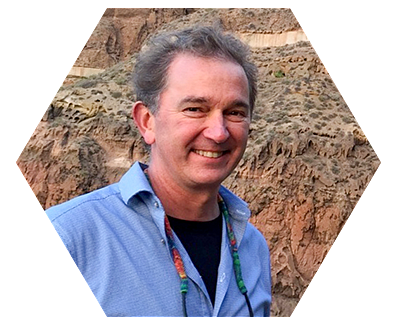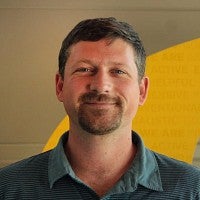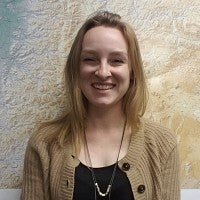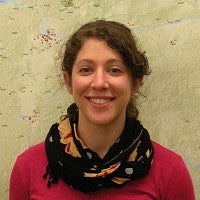The Oregon Hazards Lab uses science, technology, and community engagement to understand, monitor, and mitigate multi-hazards within the Pacific Northwest.
In response to the historic 2020 wildfire season, OHAZ is leading a team of regional stakeholders — representing emergency response, public utilities, and educational advocates — to deploy resilient communications and monitoring infrastructure in Oregon that mitigates wildfire risks, supports emergency communications, and enhances economic recovery.
We are currently partners in the following efforts:

Doug Toomey is a Professor of Geophysics in the Earth Sciences Department at the University of Oregon, where he is the director of the Oregon Hazards Lab and principal investigator for the Oregon components of the Pacific Northwest Seismic Network, ShakeAlert, and ALERTWildfire. He is a pioneer in the use of ocean bottom seismology to explore tectonic plate boundaries and has led scientific expeditions in the Atlantic, Pacific, and Mediterranean oceans, the Galápagos Archipelago, and the Oman ophiolite.
On a stormy day in the North Atlantic, when the deployment of an ocean bottom seismometer went badly, Doug was able to prevent a shipmate from losing several fingers. Over twenty years later, they have three wonderful children, a beloved dog, never enough bikes, and they explore the PNW in an 87 Westy that Doug pretends he knows how to fix. His kids have been heard to say, “if we’re not cold, wet, hungry, and stranded, it’s not really an adventure.” Doug received his Ph.D. from the Massachusetts Institute of Technology and Woods Hole Oceanographic Institution.
OHAZ combines innovative technologies with expertise that spans the natural sciences, social sciences, data sciences, cyberinfrastructure, and public policy. Our focus on mitigating natural and human-caused hazards directly supports state and federal policy that addresses societal resilience. We work with Governor Kate Brown and State Resilience Officer Mike Harryman to support Governor Brown’s policy initiative Resiliency 2025: Improving our Readiness for the Cascadia Earthquake and Tsunami. The overarching goal is to implement an emergency warning system for multi-hazard events: earthquakes, wildland fires, landslides, and flooding, into one alerting and monitoring system. With generous support from the State, OHAZ is contributing to this vision.
ShakeAlert and ALERTWildfire are rooted in issues of equality and equity by focusing on providing actionable, life-saving information to the public and to lifeline infrastructure providers. Our programs address the region’s most frequent hazard (wildfire) and its most regionally devastating (Cascadia earthquake and tsunami). By supporting publicly available ShakeAlerts, or access to real-time ALERTWildfire video data, our programs provide citizens and first responders with up-to-the-second situational awareness.
UO students share a strong sense of place and stewardship. The OHAZ vision of making our science actionable and beneficial to the public appeals to many. Students participating in OHAZ are exposed to science for use (applied science), science for discovery (basic science), and the need to communicate to policy makers and the general public. No single person can master the diversity of expertise required to stand up a public facing, public safety program. Students who join in on our mission, by necessity, dive into the deep end of the pool of convergent science. It is a thrilling experience and one that trains students to be both experts and generalists in a larger community.

The Environment Initiative is committed to working together toward a just and livable future that addresses the intersections of environmental research and teaching with social and environmental justice.
The framework of technology, science, and public engagement that strengthens resilience also enhances environmental stewardship and ecological understanding, and informs societal responses to climate and land-use changes. Current stewardship practices have a critical shortcoming, however: they are data-starved. Many technologies, while robust and precise, are expensive and monitoring/alerting networks too often rely on sparse topologies. Building on the successful growth of hazards monitoring, our vision is to be international leaders in utilizing Internet of (Wild) Things technologies that drive orders-of-magnitude denser (yet low-cost) networks that support stewardship of place.
Technology alone, however, cannot build a resilient, just, and livable future. Consequently, one of our overarching goals is to provide physical, life, and social scientists with curated, open-access data that will deliver actionable information to emergency managers, lifeline infrastructure providers, decision makers, Tribal governments, and other members of the public. OHAZ seeks to simultaneously foster convergent research and build a disaster-resilient society. Achieving this vision will require that our programs are well informed by the broader community that comprises the University of Oregon’s Environmental Initiative. As a team, we look forward to that challenge, as well as the sense of camaraderie that an integrated Environmental Initiative will foster.



